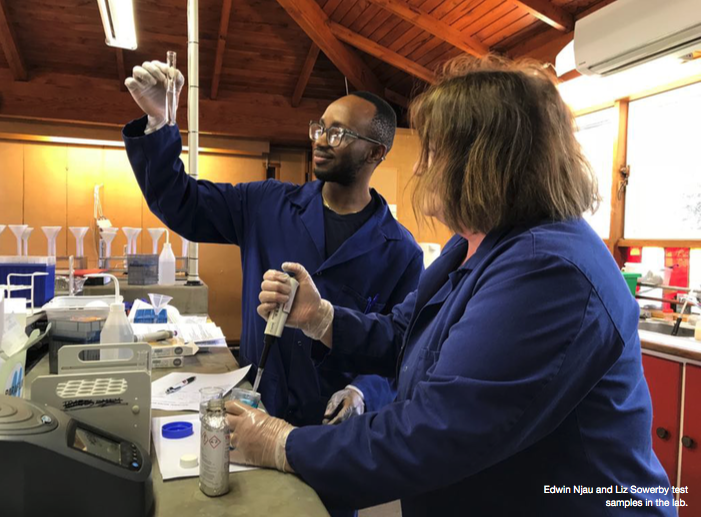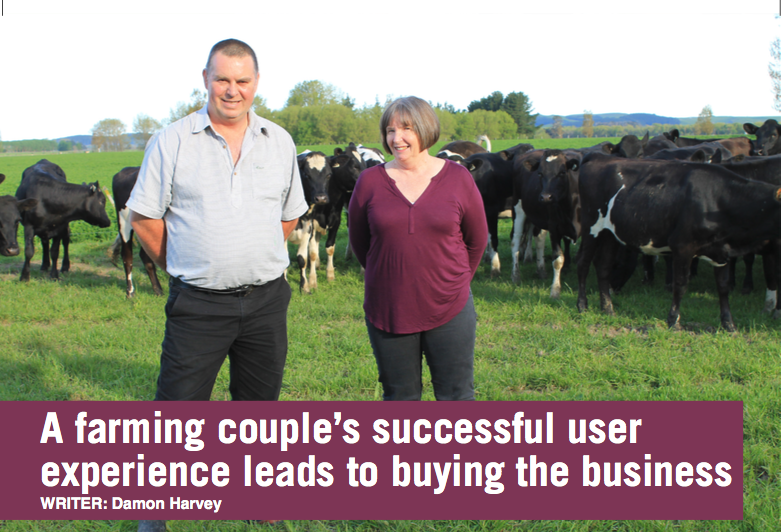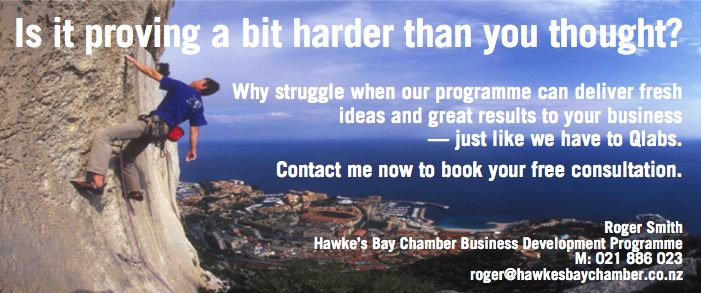Just like Victor Kiam of Remington Razors fame, Ray Burr and Donna Campbell liked the product so much they bought the company.
Ray and Donna were dairy farmers from Aria in the King Country who, like many other farmers across New Zealand, relied on using urea to increase productivity. They started out with 360 cows, which over time grew to 520.
“Our system was relying on the increasing use of urea – from 50 kilograms of urea/hectare/year up to 150 kilograms of urea/ hectare/year – but production wasn’t increasing and we were facing major animal health issues: downer cows; Rotovirus; a large numbers of lame cows; an increased reliance on CIDRs [controlled internal drug releases] to get cows in calf; induction to try and maintain an acceptable calving spread; and more,” says Ray.
The breakdown in their system led to a lack of net cash profit and they could see the harsh impact of urea on the farm.
“As a farmer you always try to do your best using the knowledge that you have available, but it wasn’t working on our farm. We were actually going backwards not forwards, and we could see that our farming practices were impacting on the environment and the health of our animals.
“You have a thought in the back of your mind that you are actually producing food for humans and if your animals aren’t performing too good and they’re suffering or not healthy, what are you doing? We needed to look for the technology that would help us farm the way we wanted to farm – sustainably.
“That meant having healthy pastures, healthy animals and a really healthy cashflow, and we achieved all of that within a few years using these programmes. Increased production starts with healthy soil.”

Ray and Donna went in search of support and after seeking advice from several highly regarded experts in agriculture who gave no satisfactory answers, they decided to look outside the square.
The rest, they say, is history. Not only did the farm come back to life but productivity soared (more about this shortly).
So, what was the secret? They found a small business in Waipawa owned by Peter and Daphne Lester that used advanced, science- based systems focusing on the three key elements – soil, plant and animal nutrition.
What farmers and horticulturists need to know is that standard fertiliser has only four of the sixteen elements soil requires to be healthy. When the same four ingredients get dumped on the soil year after year, there is a saturation of those four elements with none of the other twelve soil essential elements being monitored and replaced if necessary.
“This was an exciting time in our farming career as we observed a complete turnaround not only in our farming operation but also in the farm environment. Improvements were taking place every year, we couldn’t wait for calving to start and the new season to unfold; farming for us became an absolute pleasure,” says Ray.
After using Quantum for six years, the Burr’s got a phone call from Peter to see if they were interested in buying the business.
They had already sold the farm and had been having a well-deserved break while contemplating their next move.
“We had 18 years of milking 520 cows, so we were enjoying having a few sleep-ins and taking a year off,” says Ray.
“In 2008 we went from being share milkers to shareholders, buying a 50 percent shareholding in Quantum with the opportunity to buy the business in full.”
In 2016 the Burr’s took over full ownership. To further develop the business and add credibility to their farming system programme, they invited a highly respected vet and animal nutritionist to come out from the US, and he lived with them for about three months while they absorbed all the expertise and wisdom he offered.
“It was a real eye opener and made us realise how far New Zealand had to go and where we needed to be to keep up with the rest of the world.”
Farming practices and their impact on the environment have been some of the hottest and most scrutinized issues, both in local and national politics.
“Farmers are now under a lot of pressure because of rules and regulations about what they can and can’t do. This system encourages farming the farm as an ecological entity, looking at the soil fertility as well as what animals are eating.
“At every step in the food chain we can look at efficiencies and how farmers can get the right efficiencies without going overboard and having a detrimental effect on the environment. Believe it or not, if you do that properly, profits follow.
“That’s been going on for 50 to 60 years. There’s always been enough scientists and people farming under these types of systems that sooner or later sustainable food production would be achieved using the right methods; otherwise when you get it wrong, you have a detrimental effect on soil and animal health,” Ray says.
Donna says moving from the farm into an agribusiness wasn’t an easy transition.
“It was quite a struggle actually, from dealing with 520 cows a day to suddenly dealing with people and selling your wares, but it did help that we had used this system and could personally verify the results.”
Since taking over full ownership, the Burrs have rebranded the business from Quantum to Qlabs and given their science a brand name – Fallian.
Fallian is Scottish Gaelic for healthy and healthy encompasses what the coordinated soil–plant–animal nutrition programmes achieve.
Healthy soil equals Healthy plants equals healthy animals equals healthy environment equals healthy bank balance.
They have also recently been granted a patent for their Ruminant Nitrogen Utilisation Efficiency (RNUE).
Ray says RNUE is one of the most proactive advancements available in New Zealand pastoral agriculture. Basically, by scientifically evaluating farmers’ pastures in the laboratory, Qlabs can determine how much urinary nitrogen and milk urea nitrogen an animal will produce when it comes time to graze that pasture. This is a powerful management tool.
“Farmers who have worked with us to develop this programme have enjoyed shifting their thinking in kg/DM/Ha to asking themselves, ‘what is the true value for my livestock and the environment?”
“This enables farmers to work proactively to gain greater pasture- to-animal production efficiency while reducing their environmental footprint. For me, there is no satisfaction in agriculture than witnessing the enjoyment farmers get out of farming successfully.”
Ray is also strong to point out that while they saw success in using Quantum for dairy farming, Qlabs now has clients across the primary sector spectrum, both conventional and organic producers.
They work with viticulturalists, horticulturalists and agriculture producers, all of whom have had significant success in increased productivity while enhancing their land.
“We test soil here in our lab in Waipawa to determine what essential nutrients are missing, and then we provide the client with a treatment plan to fix all those problems,” says Donna.
“First we improve farm soil health, which is quickly followed by animal health, and then last but not least, the farmer’s health improves as the stress goes down when the costs go down and the profits go up.
“In dairy we have seen production rise by 3,500 kilograms/MS. The farm moved from non-compliance to full compliance, meeting all obligations required by Environment Canterbury in the Red Zone, and profitability increased at the same time, without using any surplus nitrogen at all. That means savings in the region of $60,000 a year because the farmer is not paying for excess artificial nitrogen anymore.”
In growing their business The Burr’s have become members of the Hawke’s Bay Chamber’s Business Development Group. They are now also getting one-on-one support from Roger Smith, the director of the programme.
Members of the Business Development Group meet fortnightly to identify and solve a $20,000 problem in every member’s business every month.
Roger says already this year the Group has helped each other discover and address $2 million worth of issues.
“As we like to say that is $2 million in the back pocket and not out the back door” he says.
Roger says 1-1 clients also have access to the Programme’s purpose- built diagnostic ‘Business Optimiser’ software that is used to discover the full and immediate profit potential of their business.
“That analysis then allows us to build a longer term growth plan for each individual business to help the owner achieve their work and lifestyle goals” he says.
Here is some feedback from clients on the Group Programme…
- “We now know how to take our customers from $300 a year spend to over $3,000 a year!”
- “Our new value-add ideas have increased our price to our customers by 50% and they thanked us for it!”
- “Our new sales system is getting us in front of customers that would never have seen us just six months ago!”
- “We have learned ways to increase our turnover by around $5,000 a week!”
- “Our new sales script has increased our sales by 20%!”
As for Qlabs, Roger sees it as a genuine ‘challenger brand’.
Roger says a challenger brand usually starts as a small business with a big idea that attacks the ingrained assumptions about a category and the way the incumbents do business. A good example of a global challenger brand is Apple in its early days – with Steve Jobs at the helm. They took computers out of the basement and put them on every worker’s desk. It was an outrageous idea at the time but one that changed the world.
“Challenger brands change the world because they are the ones that have the courage to look at what we all take for granted and ask ‘why’?” Roger says.
“What Ray Burr and Donna Campbell have developed at ‘Qlabs’ is world leading technology that is now a profit making machine for every kind of farm in New Zealand. Ray and Donna are challenging some of NZ’s ingrained assumptions about how things are done – and proving them wrong. They have been so successful they can now guarantee every farmer or grower they work with an environmentally compliant future, greater animal health, much higher productivity and much greater profitability. This really is 21st century land management in action – and it is what New Zealand is crying out for right now. This is a story we should all be shouting about from the roof tops” Roger says.
Waipawa is no Silicon Valley – and it is an unlikely place to find New Zealand’s next technology superstar – but Ray and Donna have no desire to move their business to the big city.
“Our business is all about the ‘health’ and ‘heart’ of the country” Ray says. “We love being in and around the rural community and its people. We live on the land ourselves on a small lifestyle block – and nothing will move us away from here!” he says.



